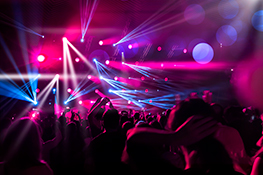Stage Lighting Design: The Complete Guide from Concept to Execution
Understanding the Vision: Concept Development
Before a single light is hung, a successful stage lighting design begins with a deep understanding of the production. This involves close collaboration with the director, set designer, and other key creatives. The initial discussions should focus on the overall mood, style, and themes of the performance. Key questions to ask include: What is the story being told? What emotions should the lighting evoke? What is the overall aesthetic? Defining these core elements lays the foundation for a cohesive and impactful design. Detailed analysis of the script, considering crucial moments and character arcs, is vital. Mood boards, sketches, and even initial lighting plots can help visualize the concept and ensure everyone is on the same page. This collaborative process ensures that the lighting effectively complements and enhances the narrative, rather than distracting from it.
Technical Specifications: Planning and Design
Creating the Lighting Plot:
The lighting plot is the blueprint of your design. It meticulously details the placement, type, and function of each lighting instrument. This crucial document guides the entire technical process, from rigging to programming. It includes precise positions, angles, color specifications, and the intended effect of each fixture. Software like Vectorworks, WYSIWYG, or Capture are frequently used to create these detailed plots, allowing for accurate visualization and simulation of the final lighting scheme. Careful consideration must be given to factors such as fixture wattage, color temperature, beam angle, and throw distance to achieve the desired results.
Fixture Selection:
Choosing the right lighting fixtures is paramount. The selection process involves understanding the diverse range of available instruments, each with its strengths and weaknesses. This includes LED fixtures (for their energy efficiency and color flexibility), traditional tungsten lights (for their warm, classic aesthetic), moving lights (for dynamic effects and precision), and specialized fixtures like followspots and cyc lights. The selection should directly relate to the lighting plot and the specific needs of each scene. Factors such as budget, available rigging points, and the venue’s infrastructure play a critical role in this decision-making process.
Execution and Implementation: Bringing the Design to Life
Rigging and Focusing:
The physical installation of the lighting instruments is a crucial phase requiring precision and technical expertise. Rigging involves safely securing the fixtures to the appropriate points in the venue’s rigging system. This step necessitates a deep understanding of weight distribution, safety regulations, and the structural integrity of the venue. Focusing each fixture involves meticulously adjusting its beam angle and direction to precisely illuminate the designated areas on stage. Accurate focusing ensures that each light achieves its intended effect, avoiding spill and maximizing impact.
Programming and Cueing:
This is where the lighting design truly comes alive. Using a lighting console, the lighting programmer translates the lighting plot into a series of cues or programmed sequences. This involves controlling parameters such as intensity, color, and movement for each fixture, precisely timed to synchronize with the action on stage. The programmer works closely with the director to ensure that the lighting enhances the dramatic arc and contributes to the overall storytelling. Careful attention to detail is crucial in creating smooth transitions, subtle changes, and impactful moments.
Testing and Refinement: The Final Polish
Before the opening night, rigorous testing and refinement are essential. This involves conducting tech rehearsals, where the lighting is run alongside the performance to identify any issues or areas for improvement. This iterative process allows for adjustments to the cues, fine-tuning the intensity and color, and ensuring the lighting seamlessly integrates with the other technical elements of the production. Collaboration between the lighting designer, director, and other technical staff is key during this phase, allowing for feedback and refinement to achieve the optimal visual experience.
Post-Production: Documentation and Analysis
Once the production concludes, it’s important to document the entire process. This includes archiving the lighting plot, cue sheets, and any other relevant information. Analyzing the effectiveness of the lighting design can also inform future projects. This analysis could involve gathering feedback from the creative team and audience, identifying areas of success, and pinpointing areas for improvement. This process fosters continuous learning and improvement in the craft of stage lighting design.
Conclusion: The Art and Science of Stage Lighting
Stage lighting design is a unique blend of art and science. It is a collaborative process that requires creativity, technical expertise, and a deep understanding of theatrical storytelling. By carefully considering each stage of the process, from concept development to post-production analysis, lighting designers can create truly impactful and memorable performances. This comprehensive guide provides a strong foundation for navigating this complex yet rewarding discipline. Remember, the ultimate goal is to elevate the narrative and enhance the overall theatrical experience.


 Auditorium Construction Services
Auditorium Construction Services 